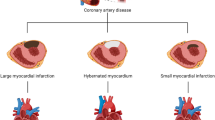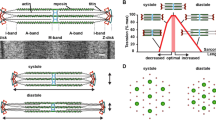Abstract
Pulmonary veins (PVs) contain cardiomyocytes with a complex cellular morphology and high arrhythmogenesis. Ca2+ regulation and Ca2+ sparks play a pivotal role in the electrical activity of cardiomyocytes. The purpose of this study was to investigate whether the cell morphology can determine the PV electrical activity and Ca2+ homeostasis. Through confocal microscopy with fluo-3 Ca2+ fluorescence, Ca2+ sparks and Ca2+ transients were evaluated in isolated single rabbit left atria (LA) and PV cardiomyocytes according to the cell morphology (rod, rod-spindle and spindle/bifurcated). Twenty-two (20%) rod, 49 (43%) rod-spindle and 41 (37%) spindle/bifurcated cardiomyocytes were identified in the LA (n = 29) and PV (n = 83) cardiomyocytes. The PV cardiomyocytes with pacemaker activity had a higher incidence of spindle/bifurcated morphology than LA and PV cardiomyocytes without pacemaker activity. As compared to those in the rod or rod-spindle cardiomyocytes, spindle/bifurcated cardiomyocytes had a larger Ca2+ transient amplitude and higher frequency of the Ca2+ sparks with larger amplitude and longer duration. In contrast, rod-spindle and rod cardiomyocytes had similar Ca2+ transients and Ca2+ sparks. The cell length correlated well with the amplitude of the Ca2+ transient and Ca2+ spark duration with a linear regression. In conclusion, cell morphology and cell length play a potential role in the Ca2+ homeostasis and Ca2+ spark. The large Ca2+ transients and high frequency of Ca2+ sparks in spindle/bifurcated cardiomyocytes may cause a high arrhythmogenesis in the PV cardiomyocytes with pacemaker activity.






Similar content being viewed by others
References
Pappone C, Rosanio S, Oreto G, Tocchi M, Gugliotta F, Vicedomini G, Salvati A, Dicandia C, Mazzone P, Santinelli V, Gulletta S, Chierchia S (2000) Circumferential radiofrequency ablation of pulmonary vein ostia: a new anatomic approach for curing atrial fibrillation. Circulation 102:2619–2628
Chen SA, Chen YJ, Yeh HI, Tai CT, Chen YC, Lin CI (2003) Pathophysiology of the pulmonary vein as an atrial fibrillation initiator. Pacing Clin Electrophysiol 26:1576–1582
Chen YJ, Chen SA, Chang MS, Lin CI (2000) Arrhythmogenic activity of cardiac muscle in pulmonary veins of the dog: implication for the genesis of atrial fibrillation. Cardiovasc Res 48:265–273
Suzuki S, Yamashita T, Otsuka T, Sagara K, Uejima T, Oikawa Y, Yajima J, Koike A, Nagashima K, Kirigaya H, Ogasawara K, Sawada H, Yamazaki T, Aizawa T (2009) Treatment strategy and clinical outcome in Japanese patients with atrial fibrillation. Heart Vessels 24:287–293
Ejima K, Shoda M, Futagawa K, Kimura R, Manaka T, Hagiwara N, Kasanuki H (2009) Transverse shifting of the esophagus according to the patient’s position helped achieve a safe and successful pulmonary vein isolation procedure. Heart Vessels 24:317–319
Wu J, Schuessler RB, Rodefeld MD, Saffitz JE, Boineau JP (2001) Morphological and membrane characteristics of spider and spindle cells isolated from rabbit sinus node. Am J Physiol Heart Circ Physiol 280:1232–1240
Munk AA, Adjemian RA, Zhao J, Ogbaghebriel A, Shrier A (1996) Electrophysiological properties of morphologically distinct cells isolated from the rabbit atrioventricular node. J Physiol 493:801–818
Ren FX, Niu XL, Ou Y, Han ZH, Ling FD, Zhou SS, Li YJ (2006) Morphological and electrophysiological properties of single myocardial cells from Koch triangle of rabbit heart. Chin Med J 119:2075–2084
Chen YC, Chen SA, Chen YJ, Tai CT, Chan P, Lin CI (2004) T-type calcium current in electrical activity of cardiomyocytes isolated from rabbit pulmonary vein. J Cardiovasc Electrophysiol 15:567–571
Chou CC, Nihei M, Zhou S, Tan A, Kawase A, Macias ES, Fishbein MC, Lin SF, Chen PS (2005) Intracellular calcium dynamics and anisotropic reentry in isolated canine pulmonary veins and left atrium. Circulation 111:2889–2897
Patterson E, Lazzara R, Szabo B, Liu H, Tang D, Li YH, Scherlag BJ, Po SS (2006) Sodium-calcium exchange initiated by the Ca2+ transient: a arrhythmia trigger within pulmonary veins. J Am Coll Cardiol 47:1196–1206
Wongcharoen W, Chen YC, Chen YJ, Chen SY, Yeh HI, Lin CI, Chen SA (2007) Aging increases pulmonary veins arrhythmogenesis and susceptibility to calcium regulation agents. Heart Rhythm 4:1338–1349
Chen YJ, Chen SA, Chen YC, Yeh HI, Chang MS, Lin CI (2002) Electrophysiology of single cardiomyocytes isolated from rabbit pulmonary veins: implication in initiation of focal atrial fibrillation. Basic Res Cardiol 97:26–34
Chen YJ, Chen YC, Tai CT, Yeh HI, Lin CI, Chen SA (2006) Angiotensin II and angiotensin II receptor blocker modulate the arrhythmogenic activity of pulmonary veins. Br J Pharmacol 147:12–22
Wongcharoen W, Chen YC, Chen YJ, Chang CM, Yeh HI, Lin CI, Chen SA (2006) Effects of a Na+/Ca2+ exchanger inhibitor on pulmonary vein electrical activity and ouabain-induced arrhythmogenicity. Cardiovasc Res 70:497–508
Chang SH, Chen YC, Chiang SJ, Higa S, Cheng CC, Chen YJ, Chen SA (2008) Increased Ca(2+) sparks and sarcoplasmic reticulum Ca(2+) stores potentially determine the spontaneous activity of pulmonary vein cardiomyocytes. Life Sci 83:284–292
López-López JR, Shacklock PS, Balke CW, Wier WG (1994) Local Stochastic release of Ca2+ in voltage-clamped rat heart cells: visualization with confocal microscopy. J Physiol 480:21–29
Yin L, Bien H, Entcheva E (2004) Scaffold topography alters intracellular calcium dynamics in cultured cardiomyocyte networks. Am J Physiol Heart Circ Physiol 287:1276–1285
DiFrancesco D, Ferroni A, Mazzanti M, Tromba C (1986) Properties of the hyperpolarizing-activated current in cells isolated from the rabbit sino-atrial node. J Physiol 377:61–88
Van Ginneken A, Giles W (1991) Voltage clamp measurements of the hyperpolarization-activated inward current If in single cells from rabbit sino-atrial node. J Physiol 434:57–83
Baartscheer A, Schumacher CA, Belterman CN, Coronel R, Fiolet JW (2003) SR calcium handling and calcium after-transients in a rabbit model of heart failure. Cardiovasc Res 58:99–108
Lipsius SL, Bers DM (2003) Cardiac pacemaking: If vs. Ca2+, is it really that simple? J Mol Cell Cardiol 35:891–893
Kwong KF, Schuessler RB, Green KG, Laing JG, Beyer EC, Boineau JP, Saffitz JE (1998) Differential expression of gap junction proteins in the canine sinus node. Circ Res 82:604–612
Honjo H, Boyett MR, Kodama I, Toyama J (1996) Correlation between electrical activity and the size of rabbit sino-atrial node cells. J Physiol 496:795–808
Sobie EA, Dilly KW, dos Santos CJ, Lederer WJ, Jafri MS (2002) Termination of cardiac Ca2+ sparks: an investigative mathematical model of calcium-induced calcium release. Biophys J 83:59–78
Acknowledgments
The present work was supported by grant SKH-TMU-97-14 from Shih Kong Wu Ho-Su Memorial Hospital.
Author information
Authors and Affiliations
Corresponding authors
Rights and permissions
About this article
Cite this article
Yu, MC., Huang, CF., Chang, CM. et al. Diverse cell morphology and intracellular calcium dynamics in pulmonary vein cardiomyocytes. Heart Vessels 26, 101–110 (2011). https://doi.org/10.1007/s00380-010-0035-y
Received:
Accepted:
Published:
Issue Date:
DOI: https://doi.org/10.1007/s00380-010-0035-y




